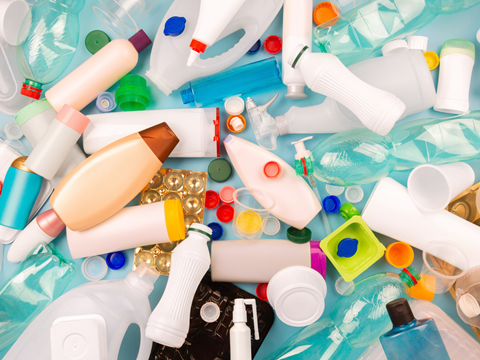
The Association of Plastic Recyclers (APR) has updated its APR Design for Recyclability Recognition Program, with blow moulded PET bottles and containers, PET packaging constructs, natural and coloured HDPE bottles and containers, and mono-PE stretch and collation shrink films now eligible for Preferred Design Recognition (PDR).
Reportedly, APR Design Recognition can be achieved in various ways, but each verifies that a package or packaging component has met the APR Design Guide’s highest criteria for recyclability. This recognition is expected to help component and packaging manufacturers meet their clients’ recyclable goals by providing third-party validation of recyclability within the North American recycling system.
The four new additions mean that twenty-four components are now eligible for PDR.
“Since its inception, the APR Design Recognition Program has reviewed and recognized packaging from more than 120 companies and has led to the mainstream adoption of impactful innovations,” explained Ruben Nance, APR Program Director for PDR. “One recognized component may be used on hundreds, if not thousands of different packages, so that one component can have a massive impact on plastics packaging sustainability. The APR Design Recognition Program provides a simple way to identify these types of trusted solutions from suppliers.”
Steve Alexander, President & CEO of APR, added: “More companies than ever are taking action to improve the recyclability of their packaging which means less waste, more efficient use of limited natural resources, and more high-quality PCR. We look forward to recognizing companies that demonstrate their commitment to developing sustainable packaging solutions.”
APR recommends the latest episode of its podcast, Recycled Content, to learn more about APR Design Recognition. A webinar – APR Design Recognition 101: The Seal of Approval for Recyclable Plastic Packaging Design – will also be held on 30th May at 14:00 ET (20:00 CEST).
Furthermore, APR highlights the APR Library of Recognized Solutions as a means of ‘sav[ing] the time, effort and resources needed to identify and validate recyclable packaging’. After its recent upgrade, it now features search, sort, and filter capabilities; it is updated with new products in real time, and improvements to its searchability and categorization reportedly continue.
Earlier this year, RecyClass updated its Recyclability Evaluation Protocols and unveiled a new set of Design for Recycling Guidelines for all plastic packaging streams. This was intended to provide up-to-date advice and help companies improve the recyclability of their plastic packaging.
Additionally, a joint project between the World Packaging Organisation and the United Nations Industrial Development Organization resulted in a set of food safety guidelines for the Mongolian food sector and help its participants achieve international standards. Their contents included the new Guidelines to Facilitate Good Practices in the Food Packaging Industry.
If you liked this story, you might also enjoy:
How are the top brands progressing on packaging sustainability?
The ultimate guide to global plastic sustainability regulation




















No comments yet